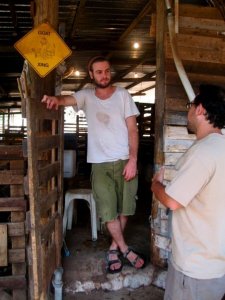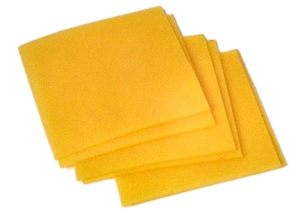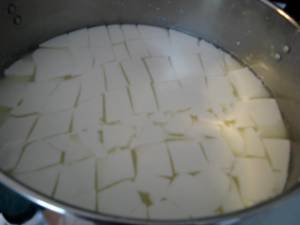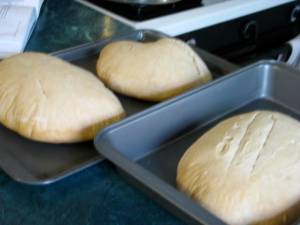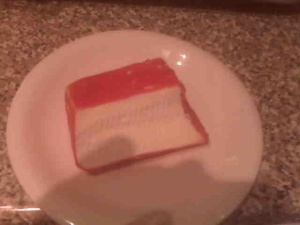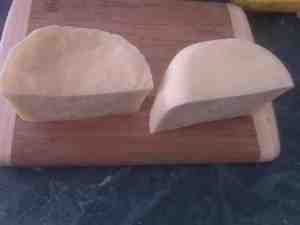A lot of people who know about my proclivities for and activities related to cheese-making in my Brooklyn, NY apartment have asked me for an easy cheese they can try making at home.
Mozarella is by far the easiest and will give you the most instant gratification for your efforts. Before we dive into the recipe, let me digress for a moment about the history of Mozarella. It’s not clear how mozarella was invented, but like many of the best inventions, it was probably an accident. A cheese curd probably fell into a pot of boiling water, an Italian farmer fished it out and, voi la, mozarella.
We do know that the classic buffalo mozarella comes from Aversa near Naples:
Classic Buffalo Mozarella is made from the milk of water buffaloes. According to Wikipedia, “more than 33,000 tons of buffalo mozarella are produced per year in Italy and it is an industry worth more than $430 million.”
Unless you have access to water buffaloes, you will most likely make your mozarella from cow’s milk. Technically, mozarella made from the milk of cows is called Fior di latte .
OK, now for the good stuff. Here is an easy, “in-an-afternoon” cheese that anyone can make at home. If you need help with any supplies, I recommend Cheesemaking.com but you can also get all of the ingredients for Mozarella at Wholefoods or another health food store.
First, watch this video to get a visual (and aural – Spanish guitar music always helps) sense of how it looks to make Mozz and then see the recipes below for details:
Although it takes a little effort, once you’ve tasted your home-made Mozz, you’ll know it’s worth it.Most recipes for mozarella are similar so you can browse the internet for other variations. This recipe is from Instructables.com:
step 1 Equipment you will need:
Equipment: 1. At least an 8 quart pot either enameled or stainless steel. (Do not use aluminum, cast iron or other reactive pots) 2. Thermometer. (A candy thermometer will probably work but a good digital thermometer is much better for accuracy.) 3. A couple measuring cups or something to dissolve the Citric Acid and Rennet in. 4. A big strainer to strain the Curds fro…
 step 2OK First things First
step 2OK First things First1. Pour 1 teaspoon Citric Acid into 1/4 cup unchlorinated water and stir. Crush the Rennet tablet and pour it into the other cup of unchlorinated water. The Citric Acid should be dissolved by the time you have to use it. Most of the Rennet will be dissolved but there will still be some residue left. 2. If you haven’t done so already, pour milk into your pot. Make sur…
 step 3Pour in the Citric Acid.
step 3Pour in the Citric Acid.1. Pour the dissolved Citric Acid in the milk and stir for 1 minute. 2. Sprinkle the other teaspoon of Citric Acid in the milk and sir for another minute. You will probably see the milk start to curdle very shortly.
 step 4Heat milk to 88-90 degrees F. Stirring occasionally.
step 4Heat milk to 88-90 degrees F. Stirring occasionally.This is not an error. You are not trying to pasteurize the milk. If you get it too hot or too cold, the Rennet will not make curds. Use a low heat so it doesn’t go past the 88-90 degrees. It should take about 10-15 minutes.
 step 5At 88-90 degrees turn off the heat and stir in the Rennet solution for 15-20 seconds.
step 5At 88-90 degrees turn off the heat and stir in the Rennet solution for 15-20 seconds.Cover the pot with the lid and LEAVE IT SET UNDISTURBED FOR AT LEAST 15-20 MINUTES until you can get a clean break. I usually let mine set for 15-30 minutes. Time is not critical here as long as you get the clean break.
 step 6Wait for a clean break.
step 6Wait for a clean break.This is what a clean break looks like. When you poke your finger into it and move for an inch or so and lift it out, the Curd and Whey should separate shortly. If it is still liquidy (Is that a real word?) and sticks to your finger let it set a while longer.
 step 7Cut the Curd.
step 7Cut the Curd.Cut the Curds into 1/2 inch cubes from top to bottom as shown. Then do the same thing at a 45 degree angle.
 step 9Apply low heat and heat to 108 degrees.
step 9Apply low heat and heat to 108 degrees.Apply low heat and stir the curds occasionally to keep them separated until they reach 108 degrees. This will take about 15 minutes. The Curds will shrink and start to sink as the Whey is expelled from them.
 step 10Turn off the heat.
step 10Turn off the heat.Turn off the heat and continue stirring every few minutes for an additional 20 minutes. The Curds will keep shrinking.




